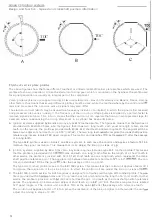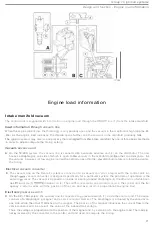
Group
28
Ignit
ion
systems
D
esign
a
nd
fun
ction
-
Compensa
t
ion
functions
I
f
th
e load
t
empo
rar
ily
re
verts
to normal
(b) during
the adaptive retardation period
(e
.
g
.
the
tra
iler
uncoupled or
the
road becomes downhill)
,
the tim
i
ng will be
returned
to the basi
c
sett
i
ng
(a).
If engine
speed
and
load sub-
sequently change
(wi
thin
the 10-m
i
nute period) so
that cond
i
tions
once more
fall within
the
knock-sensitive zone
(c),
the
control unit
aga
i
n automati
c
ally retard
th
e
timing by
without the
occurrence of
knock
.
If knock persists
desp
i
te the
intervention of
the
retardat
i
on funct
i
on
,
the
tim
i
ng
w
i
ll
be retarded
as
usual
(as
indicated by
the
dashed downward steps
)
i.e
.
by
each
time kn
o
ck occurs
.
The
control unit always leaves
the
adapt
i
ve mode
(
at
the
end of
i
nterval
(
a
))
after a
predetermined
i
nterval (approx.
10
mini
regardless of
load
.
If
the
load
remains
high, a new adapt
i
ve period
w
i
ll commence if
knock recurs and the
cycle will
be
repeated from the
start of interval (a
).
Advantages
On average, this mode
of
knock
control
permits
a
more advanced
timin
g setting
t
o
be used
- an
advantage
terms
of combus
t
ion,
fuel economy
,
and
so on
-
due
t
o
the fact that
fewer
knock
-
controlled
retardation operations are re-
quired
when
the function
is
activated.
Stated
simple
terms, knock
prevented by detecting the inc
r
eased
r
is
k
of
th
e phenomenon.
38
















































